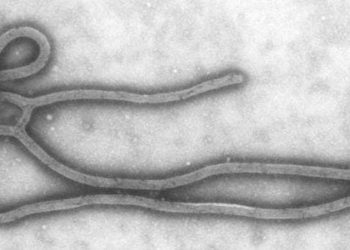Vaccine protects macaques from the West African Ebola virus [PreClinical]
1. An Ebola vaccine candidate (VSV-EBOV) conferred protection from the 2014/15 West African Ebola virus strain (EBOV-Makona) in macaques when administered as little as 3 days before virus challenge.
2. Animals vaccinated 14, 21, or 28 days before virus challenge were likely protected by antibodies specific to Ebola virus (EBOV), while animals vaccinated 3 or 7 days before virus challenge were likely protected by a short-term, generalized immune response induced by vaccine administration.
Evidence Rating Level: 1 (Excellent)
Study Rundown: The recent 2014 Ebola outbreak in West Africa resulted in over 11,100 fatalities and presented a global health crisis due to the highly contagious nature of the virus. VSV-EBOV, a current EBOV vaccine candidate, uses a recombinant vesicular stomatitis virus that expresses EBOV glycoprotein (GP). VSV-EBOV conferred protection against EBOV in various animal models and was found to be safe in recent phase I human clinical trials. However, no experiments used the specific 2014/15 EBOV-Makona strain.
Here, researchers addressed the experimental gap by challenging macaques with EBOV-Makona 3 to 28 days following immunization with VSV-EBOV. Control animals, which were immunized with a separate ineffective vesicular stomatitis virus-based vaccine, had reduced platelet counts and elevated liver enzyme levels and died 5 to 7 days following EBOV infection. Animals immunized 7, 14, 21, or 28 days before infection all survived and did not develop viremia, while those immunized 3 days before infection had varied outcomes. Animals in the 14-, 21- and 28-day groups, but not the 3- and 7-day groups, had high immunoglobulin (IgG) titers specific to EBOV-GP at the time of infection, which presumably conferred protection from EBOV. Animals in the 3- and 7-day groups showed elevated levels of cytokines characteristic of the innate immune response, prompting the researchers to conclude that this immunization timing offered a window of non-specific virus protection until specific EBOV-GP antibodies dominated the immune response.
This work importantly demonstrated that VSV-EBOV conferred protection from the 2014/15 West African EBOV strain in addition to strains tested in previous studies. These results also suggest that the vaccine can be administered within days of virus challenge, which is particularly important in the cases of international travelers and relief workers.
Click to read the study in Science
Relevant Reading: Phase 1 trials of rVSV Ebola vaccine in Africa and Europe – Preliminary report
In-Depth [animal study]: Fifteen macaques were randomly assigned to 6 groups, VSV-EBOV administration at 3, 7, 14, 21, or 28 days prior to virus challenge, or control vaccine administration at 28 days prior to challenge. The control vaccine was a separate vesicular stomatitis virus-based vaccine previously shown to be ineffective. Animals were challenged with 1000 plaque-forming units of EBOV-Makona, which is a lethal dose. The study ended at 42 days post-challenge or upon animal euthanasia due to severe disease.
Animals in the control and 3-day groups showed noticeably lowered platelet counts beginning 6 days following infection. Control animals and one animal from the 3-day group showed elevated levels of several liver enzymes, indicative of widespread infection, and were euthanized 5-8 days post-challenge. Another 3-day animal showed transiently elevated liver enzymes and recovered, while a third demonstrated only minor signs of disease. Indications of disease were absent in animals from all other groups, which survived for the duration of the experiment.
EBOV-GP-specific IgG titers were elevated more than 100-fold in the 14-, 21- and 28-day animals as compared to others at the time of virus challenge, suggesting that subsequent immunity was due to specific targeting of EBOV. In contrast, 3- and 7-day group animals showed high serum levels of interferon alpha (IFN-α), interleukin-15 (IL-15) and interferon gamma (IFN-γ) at the time of infection and the several days following it. Since these cytokines are involved in a generalized immune response against virus-infected cells, these results suggested that immunization only a few days prior to infection could confer non-specific virus protection before the EBOV-GP-specific response takes effect.
Image: PD
©2015 2 Minute Medicine, Inc. All rights reserved. No works may be reproduced without expressed written consent from 2 Minute Medicine, Inc. Inquire about licensing here. No article should be construed as medical advice and is not intended as such by the authors or by 2 Minute Medicine, Inc.






